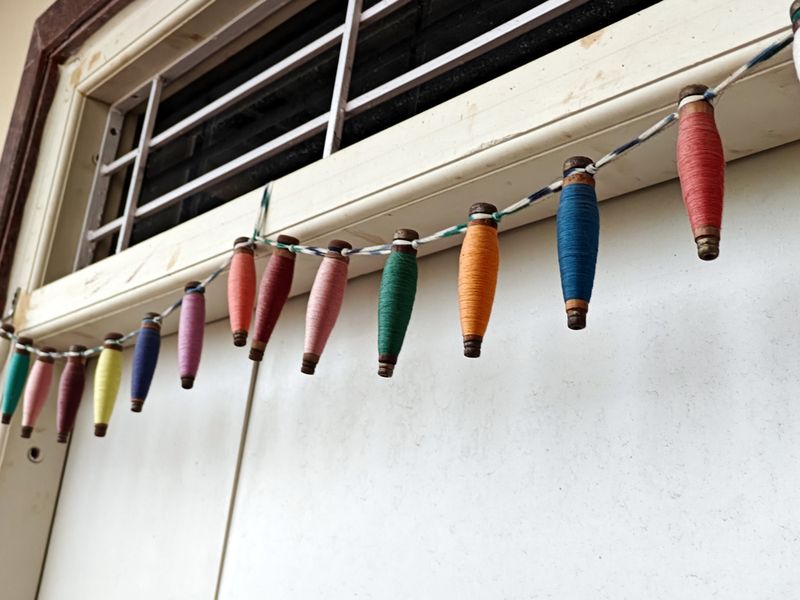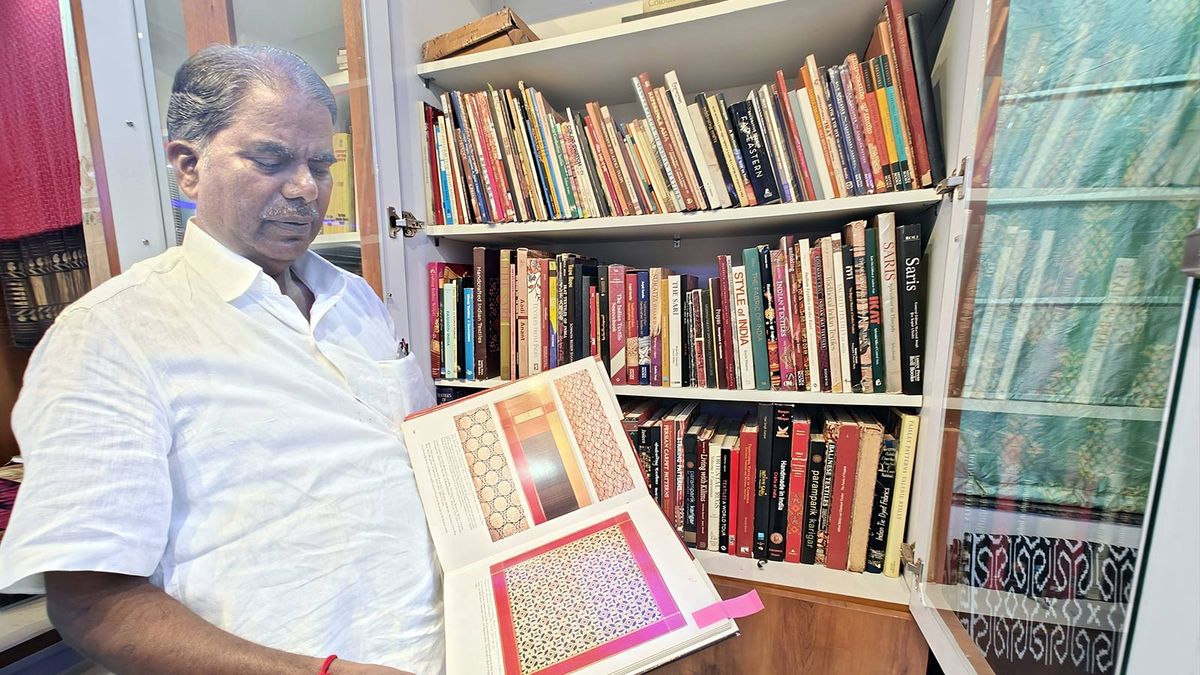As I make my way up a flight of stairs to the Gajam Govardhana Telia Rumal Art Gallery (GGTAG) in Hyderabad’s Dilsukh Nagar, the first thing I notice is the toran of colourful threads that adorn the entrance door to the museum.

History beckons
The fabric is first believed to have been made in the 19th century in Chirala, Andhra Pradesh before it spread to Nalgonda. The name comes from ‘Telia’ or oil, and 'Rumal' or handkerchief. The fabric was used in the Middle East as it was worn by men around the neck to keep dryness away while women used them as head scarves as it kept them cool in summer and warm in winter.
The fishermen in Mumbai and Andhra Pradesh used them as lungi as the oil ensured that the salt water did not slip inside. Wealthy zamindars wore them as their head gear as well. Initially, the designs were largely geometric but now there are various motifs being woven. This double ikat weave has three primary colours – black, white, and red and uses some shades of brown. Before it is woven the warp and weft are resist dyed. Puttapaka in Nalgonda district, 72 km from Hyderabad is the village where the Telia Rumal weave is practiced. The weavers belong to the Padmashali community. Govardhana and his brothers have learnt the technique of weaving from their grandfather and father and continue their family tradition by ensuring this technique does not die.

Museum musings
Stepping inside the museum (you need to call and take an appointment prior to your visit) there is a plethora of colour, courtesy the vibrant textiles that take centre stage – they are on the walls, floor, and ceiling. “We have collected several samples of these fabrics and keep changing the display so there is something new each time you come here,” says Govardhana. The ceiling has a panel of colourful Ikkat weaves in different designs. In fact, it was Govardhana who filed the application in 2015 on behalf of Puttapaka handloom cluster and it finally received the Geographical Indication (GI) tag in 2020. This tag has also helped in bringing the interest back into these weaves. The museum was inaugurated in October 2022.

Textile tales
The walls of the space also have awards, media clippings and images of Govardhana’s numerous awards. There are many old textile variants of the Telia Rumal on display in glass cases. Thai silks, silks from Kazakhstan Ikkat designs, and Japanese Kimono are also on display which gives interesting perspectives on the various kinds of Ikkat techniques used across the world. The piece de resistance though is a beige and red hued 10x 10 frame that has 100 designs all of which are different and notably it is impossible to miss the pride in his voice as he explains the kind of piece. There is also a small loom where you can see how the fabric is woven. The pieces on display are the ones that have been woven by Govardhana, his family and collected heirlooms.

Learning cues
The museum is also being used as a knowledge sharing space for students and weavers. The middle space has a large table (enough to spread a 5.5 metre saree) and chairs all around it (with cute ikkat covers) where Govardhana explains the fabric and its many nuances. As he has many thousands of samples, he has scanned all of them. There is a special machine that unfolds the saris and fabrics onto the table. He has also corrected hundreds of books all of which have also been scanned. “We have students from all over the country who come here to learn about these weaves. Many of these are old samples and these are important as this kind of work is no longer done,” explains Govardhana.

Future perfect
A Padma Shri awardee, Govardhana says that after the 1983 Festival of India, there has been some focus on the Telia Rumal. He and his team have participated in national and international exhibitions that have also given jobs to many people. His awards have spurred other weavers to revive the weaving technique and he believes this is helping the craft. “I have collected the items here for over 40 years as I believe the next generation must be able to see this kind of work. I was keen on displaying this especially after I visited museums abroad. There have been visitors from NID, NIFT, and other universities and after the museum opened, we have had many visitors. However, the process of collecting and preserving the fabrics is continual. We are doing this as a family and my brothers have been part of the process,” says Govardhana.

He says that the families whose parents or previous generations have been doing this kind of weaving are continuing the tradition. Today there is an improvement in the wages being paid which has been instrumental in the next generation continuing the craft. “We also encourage them by providing support from our end. I have conducted several training programs in Udupi and Kasargod that have weaving clusters,” says Govardhana. There is a small inhouse store that retails a variety of products that are largely exported. If you are looking to understand the weaving traditions of Telangana or for an offbeat experience in Hyderabad, a visit to this centre is a great idea as it also speaks of the resilience of a man who has batted for its resurgence.



_1710918860500_thumb_300.jpeg)